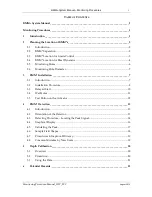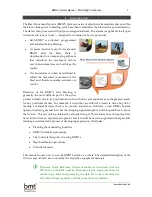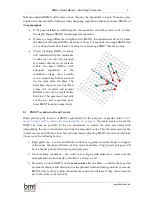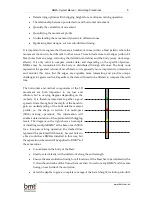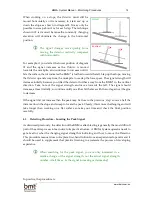
BMM
®
System
Manual
– Monitoring Procedures
6
www.bmt.com.au
Since blast movement is quite variable, one of the most important criteria when planning a
project to gain an understanding of blast dynamics, is to control the variables. For example, the
size and shape of patterns (bigger is better), initiation timing (delays and tie-up), rockmass,
explosive, hole diameter, and front face condition. This will minimise the variation and enable
more specific conclusions to be drawn from the results. Although we can plan for predictability
within a blast, there are also several factors that are difficult to control or out of the blast
designer’s control. These factors could include:
Change in material characteristics — rock type, structures, oxidation state
Inconsistent mass of explosive being loaded into each hole
Variation between batches of explosive
Variability of explosive delays.
Therefore it is valuable to quantify and understand the variability when interpreting results
and tests can be configured specifically to investigate this. To understand the amount of
variability within a blast, the following guidelines are recommended.
All monitoring holes within the body of the blast.
Install the BMM
®
s at the same depths in every hole – use multiple BMM
®
s per hole as
required.
Conduct a number of blasts to quantify variability at different depths — at least one in
the stemming and explosive zones respectively. Depending on the scope of the study, it
may be advantageous to either do these blasts with the same depth as used in the 3D
movement tests or to select different depths.
2.5
Monitoring Holes
When deciding the location and depth of a monitoring hole in the blast pattern, consideration
needs to be given to its position to ensure the BMM
®
has the greatest chance of survival.
To minimise the chance of BMMs being destroyed, it is very important to get them as far from
a blasthole as possible. The maximum distance from a blast hole is shown at position 4 in the
diagram below (equidistant between blast holes). However, this location can be less convenient
to drill and may suffer cave-in due to equipment driving through the drilled pattern. Positions
1-3 may be better from a production perspective (half way between blast holes). Whichever
position you choose, it is important to get it close to mid-way between blast holes.


